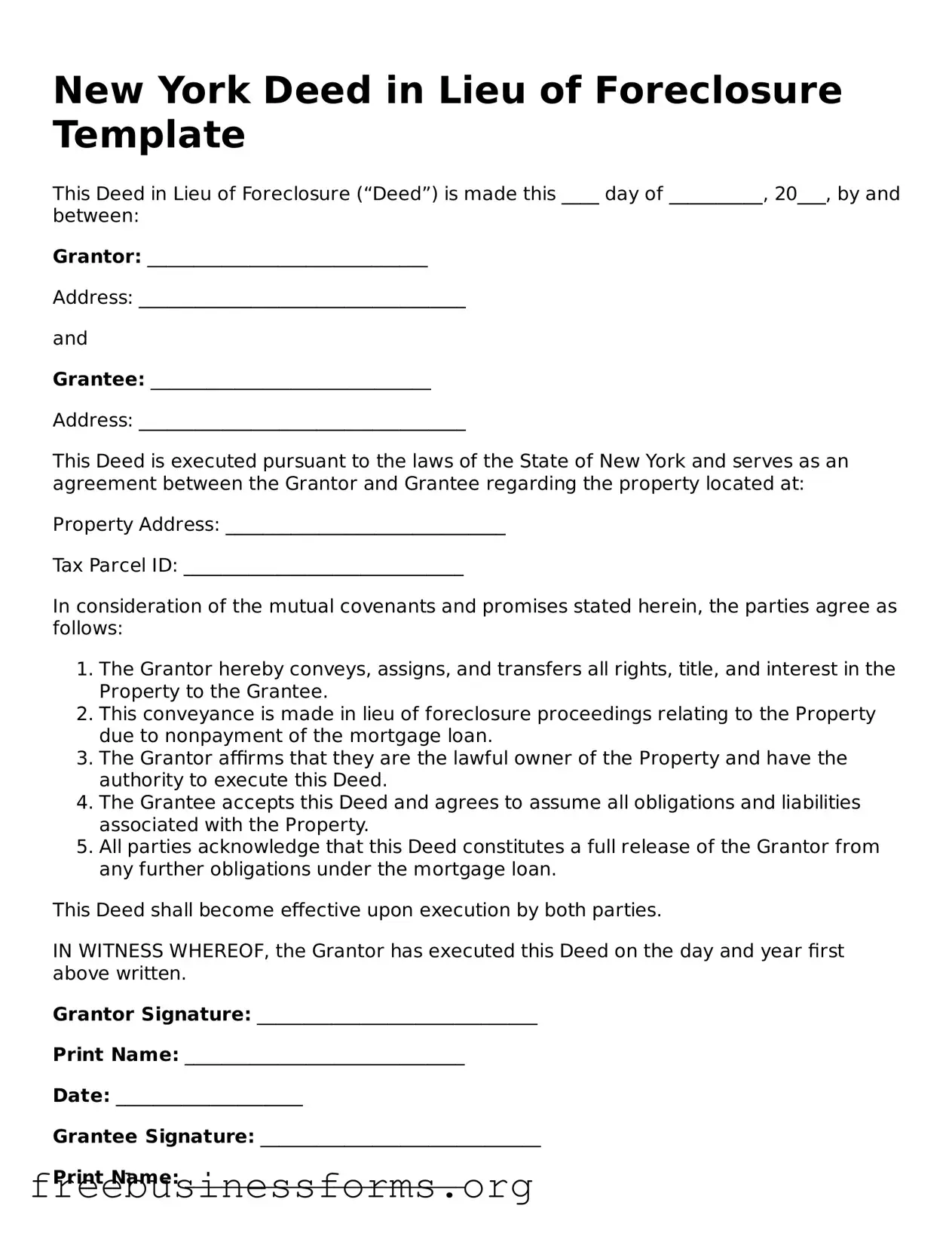New York Deed in Lieu of Foreclosure Template
This Deed in Lieu of Foreclosure (“Deed”) is made this ____ day of __________, 20___, by and between:
Grantor: ______________________________
Address: ___________________________________
and
Grantee: ______________________________
Address: ___________________________________
This Deed is executed pursuant to the laws of the State of New York and serves as an agreement between the Grantor and Grantee regarding the property located at:
Property Address: ______________________________
Tax Parcel ID: ______________________________
In consideration of the mutual covenants and promises stated herein, the parties agree as follows:
- The Grantor hereby conveys, assigns, and transfers all rights, title, and interest in the Property to the Grantee.
- This conveyance is made in lieu of foreclosure proceedings relating to the Property due to nonpayment of the mortgage loan.
- The Grantor affirms that they are the lawful owner of the Property and have the authority to execute this Deed.
- The Grantee accepts this Deed and agrees to assume all obligations and liabilities associated with the Property.
- All parties acknowledge that this Deed constitutes a full release of the Grantor from any further obligations under the mortgage loan.
This Deed shall become effective upon execution by both parties.
IN WITNESS WHEREOF, the Grantor has executed this Deed on the day and year first above written.
Grantor Signature: ______________________________
Print Name: ______________________________
Date: ____________________
Grantee Signature: ______________________________
Print Name: ______________________________
Date: ____________________
Notarization:
State of New York
County of ________________
Subscribed and sworn to before me this ____ day of __________, 20___.
Notary Public: ______________________________
My commission expires: ____________
